Heavy tank Henschel VK 3001 (H), Germany
The order for the development of a new project was placed in September 1939, literally a few days after the outbreak of hostilities in Europe. In accordance with the technical specifications, the prospective heavy tank had to have a combat mass at the level of 30 t. It was necessary to equip the vehicle with a reinforced armor compared to the DW I and DW II, as well as a 75-mm rifled tank gun. In addition, it was necessary to explore the possibility of using weapons of a larger caliber, up to 105 mm. It was also planned to recycle the various units of the machine in order to obtain improved performance.
The name of the new project was formed taking into account the required combat weight (30 t), the serial number of the development of this class and the contractor. As a result of the connection of all these data, the name VK 3001 (H) appeared. In addition, some sources mention that the name Panzerkampfwagen VI was also applied to this project, which did not become official, but later transferred to another armored vehicle.
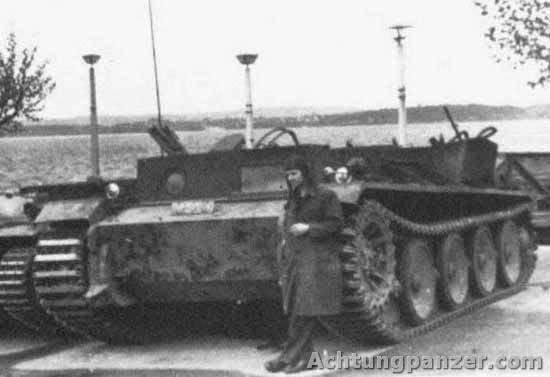
VK 3001 (H) prototype on tests. Photo Ost-front.ru
By the time the order was received for the VK 3001 (H) project, Henschel was already carrying out work on the further development of the Breakthrough Tank. The DW III project was in its early stages and was far from completing and building a prototype. Nevertheless, the engineers found it unwise to stop work due to the appearance of a new order. As a result, the available developments in Durchbruchwagen III became the basis for the new heavy tank VK 3001 (H). In fact, it was proposed to leave unchanged most of the existing project, as well as change a number of components and assemblies. Having thus completed the development of the existing project, the contracting company planned in the very near future to provide the customer with the required armored vehicle.
VK 3001 (H) project was based on the existing development, which led to the preservation of the main features of the technology. In particular, there was a significant similarity in terms of the design of the armored body and the placement of the main units. At the same time, it was planned to use other elements of the power plant, a new undercarriage, and also to develop a version of the tank with enhanced armament of increased caliber.
It was decided to use the body shape tested and tested by previous projects with several rectilinear front sheets located at different angles to each other. The front part of the new tank had a traditional form for German armored vehicles of the time with a vertical top sheet in which there were viewing instruments. The front hull plates should have a thickness from 35 to 50 mm. Behind to the frontal sheets were attached vertical sides 50 mm thick. Aft projection protection was also placed on 50-mm armor. The roof and the bottom of the tank should have been made of armor with a thickness of up to 20 mm.
In the VK 3001 (H) project, it was decided to use a new tower with an appropriate level of protection. Its design was based on the developments in previous projects, but the tower’s armor was supposed to be thicker. The thickness of the front sheets of the tower reached 50 mm. The beads and the feeds were 30 and 50 mm thick, respectively.
The tank retained the classic layout for German tank building. In front of the hull, directly below the front sheets of the hull, were placed transmission units. Immediately behind them was placed a department of management, behind which a large combat compartment was envisaged. Feed has traditionally been assigned to the engine and its additional units.
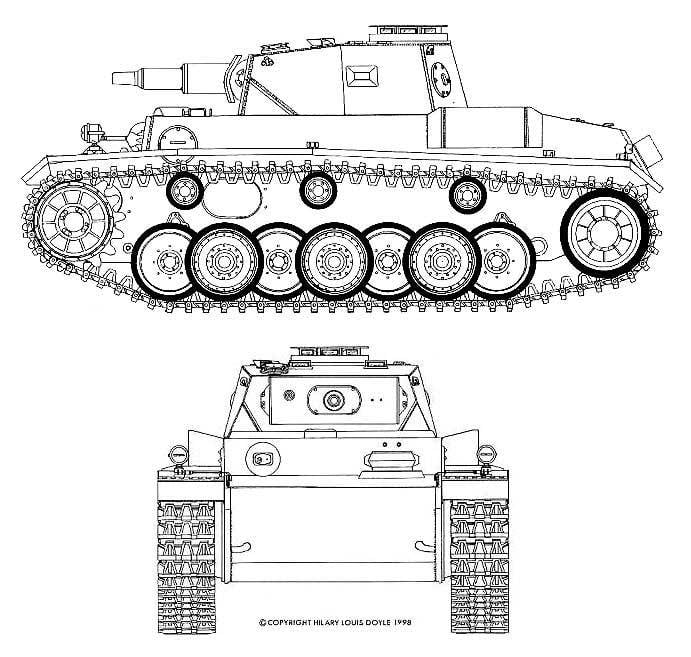
Scheme of a heavy tank with a turret and weapons. Figure Aviarmor.net
It was proposed to place a Maybach HL 116 hp 300 carburetor engine in the rear of the hull. with air cooling system. With the help of a cardan shaft, passing over the bottom through the fighting compartment, the engine was connected to the units of a mechanical transmission. The transmission based on a manual transmission had six forward gears and one reverse.
During the tests of two prototype tanks Durchbruchwagen it was found that the existing design of the chassis does not fully meet the requirements. For this reason, for VK 3001 (H) a new version of the suspension and support rollers was developed. Now, on each side of the hull, it was proposed to install seven dual support rollers of average diameter, equipped with rubber bands. The rollers were mounted on an individual torsion bar suspension and placed in a checkerboard pattern. At the same time, there were four skating rinks in the inner row, and three in the outer row.
Traditional front drive wheels and feed rails have been retained. In the middle of the board there were three supporting rollers for the upper branch of the caterpillar. The width of the metal track increased to 520 mm, however, the pinching gear was still used. All used changes in the undercarriage and tracked propulsion were associated with the required increase in combat weight and the corresponding change in the specific load on the bearing surface.
In the basic version of the VK 3001 (H) project, it was proposed to use an armored turret created on the basis of the Pz.Kpfw.IV medium tank unit, but with enhanced booking. The turret should have a 75-mm cannon and a paired machine gun. The main weapons The tank was supposed to make a tank gun 7,5 cm KwK 37 with a barrel length 24 caliber. With the help of manual drives, the gun can be guided vertically in the range from -10 ° to + 20 °. Horizontal guidance was circular and was provided by turning the entire tower. The gun was supposed to be induced with the help of the TZF9 telescopic sight.
Additional equipment promising tank consisted of two MG 34 machine guns caliber 7,92 mm. One of them was mounted on a gun mount and was guided with a gun. In the front hull sheet it was proposed to mount a standard machine-gun installation with limited pointing angles.
According to some reports, the size of the fighting compartment made it possible to place inside the stacking tank for placing up to 80-90 projectiles of the main gun of 75 mm caliber and more than 4000 cartridges for machine guns.
A variant of the enlarged turret was also developed, in which a prospective 105 caliber gun should have been placed. The required weapon was not available at that time, but plans to re-equip the tank under development were already considered seriously. The turret for the 105-mm guns should have the appropriate dimensions, as well as be equipped with all the necessary equipment.
To manage a new heavy tank was supposed to crew consisting of five people. In front of the hull, in the department of management, were placed the jobs of the driver (left) and the gunner-radio operator (right). The driver and the radio operator had viewing instruments in the front and side sheets of the hull. To get into the car, they had to use their own hatches in the roof.
The gunner, commander and loader were placed in the tower. Their jobs were equipped with viewing devices in the sides and roof of the tower. In addition, the tower had a set of hatches for access to the fighting compartment. At the commander's workplace, placed at the left side of the tower, there was an additional turret of small height with a set of viewing instruments to observe the entire surrounding space.
Alteration of the existing project DW III allowed to fulfill the existing requirements for the size and weight of the promising machine. At the same time, however, the combat weight of the heavy tank VK 3001 (H) reached 32 t - a bit more than the established technical task. The length of the machine without guns was 5,81 m, width - 3,16 m, total height - 2,57 m, height on the body - 1,83 m.
By the beginning of 1940, Henschel completed the development of the VK 3001 (H) project, which allowed the construction of an experimental machine to be put to the test. In the spring of the same year, the Henschel plant assembled an armored vehicle. At the same time, however, only the chassis with an armored hull was tested. The tower was not ready yet, and besides, there was no need to use it. For this reason, a chassis was sent to the landfill, on the roof of which there were concrete blocks that were the weight imitator of the tower.
Interestingly, in the existing photos of VK 3001 (H) prototypes there are two simulator options. In the first case, a few concrete rings of the required weight were located on the roof of the hull, in the second case, a small cabin with windows in the sides and a sunroof were additionally placed on the rings. Such equipment allowed specialists to observe the tests while being in a new machine, but being protected from external influences.
Tests of an experienced tank continued until the summer of 1940. The car reached a speed of up to 35 km / h and demonstrated a power reserve at the level of 150 km. Such parameters corresponded to the original technical requirements, which made it possible to count on the continuation of work and the further adoption of a heavy tank for service. In terms of mobility, the new armored vehicle was slightly inferior to the existing models, however, it had significant advantages in protection, and could also surpass them in firepower. Thus, in terms of aggregate characteristics, the tank VK 3001 (H) was of interest to the troops.
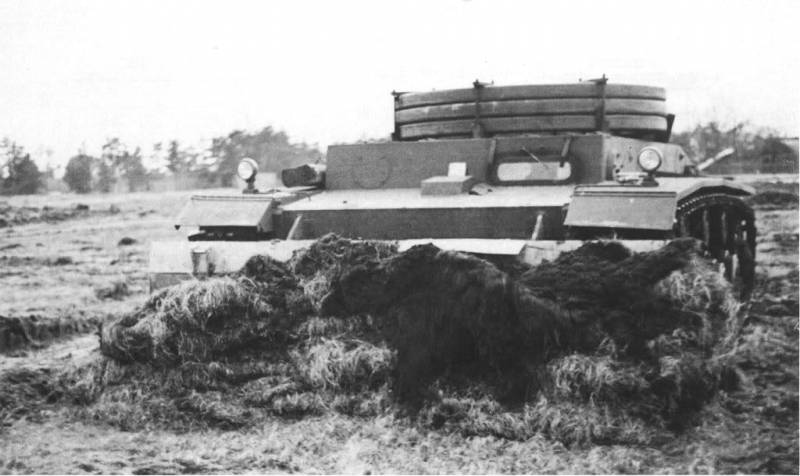
Tests of the tank chassis in the version of the engineering machine with a blade. Photo Ost-front.ru
According to the test results, it was decided to build a pre-production batch of new tanks. It was necessary to eliminate the identified design flaws, and then build eight armored vehicles using the updated design. In addition, the production of 12 turrets with 75-mm tank guns was ordered. Technique of the new party was planned to be used in the ground and military trials. In addition, it was to become the benchmark for future serial heavy tanks of the new model.
The first pre-production tank VK 3001 (H) was built by May 1941 year. Shortly thereafter, it was decided to abandon the further assembly of this technology, although some of the already started vehicles should be completed. Two such chassis in the original configuration were transferred to the customer in October 41-th. After this, new models of the heavy tank were not built. At the time of the termination of construction by Krupp, attracted to the project as a subcontractor, 12 towers of new design were assembled with 75 caliber guns. At the same time, the finished towers were not installed on the existing chassis. Instead, armored vehicles received weight simulators of different designs.
Already at the end of spring 1941, the army decided to abandon the further development of the VK 3001 (H) project. By its characteristics and general indicators, this machine was noticeably inferior to the newer VK 3601 tank. As a result, the continuation of the development of the existing project was considered inappropriate. Construction was stopped at the assembly stage of the pre-production lot. The exploitation of promising heavy tanks in the troops was no longer a question.
Despite the closure of the project due to the lack of prospects, the German army still attracted three built chassis to some work. In particular, this technique was used in comparative tests, during which it "resisted" the newer tanks VK 3601 and VK 4501 (H). Naturally, the newer tanks showed better performance and won the unofficial competition. It should be noted that the result of the VK 4501 (H) project was the serial heavy tank Pz.Kpfw.VI Tiger. Thus, in the spring of 1941, the customer made the right choice, abandoning the existing project.
One of the four samples of the VK 3001 (H) chassis later became an experimental machine and was involved in various research, tests, etc. The operation of this sample continued until the very end of the war. It was used as a chassis for new experimental models of armored vehicles, primarily for auxiliary purposes. The remaining tank chassis were transferred to one of the tank schools, where they were used as a training tool for driver mechanics.
Before the decision to cease production of new tanks, Krupp had managed to assemble a dozen towers with weapons. Half of these products were sent to Western Europe for use in the construction of the fortifications of the Atlantic Wall. The turrets and fighting compartments of the tanks were to be mounted on fortifications and used to counteract a possible enemy attack.
In May, the 1941 of the year, shortly after the decision to cease work on the VK 3001 (H) project, the German command ordered the development of new self-propelled artillery systems with 105 and 128 mm caliber guns. Rheinmetall-Borsig proposed a project for ACS with an 128-mm long-barreled 12,8 cm PaK 40 gun. A self-propelled chassis based on a heavy tank VK 3001 (H) was proposed as a carrier of this weapon. Henschel agreed to provide colleagues with unfinished chassis samples that were planned to be used for self-propelled guns.
As part of the project with the symbol 12,8 cm Selbstfahrlafette auf VK 3001 (H), the length of the chassis was increased, which was compensated by the addition of one pair of road wheels. In the stern of the hull there was a wheelhouse with an instrument of the required type. Henschel provided two unfinished chassis, which soon became the basis for new self-propelled guns. This technique was presented for testing at the beginning of 1942. Two cars were named Max and Moritz, in honor of the heroes of the famous edifying poem. After passing all the tests, combat vehicles were sent to the front.
Self-propelled guns, which received the common nickname Sturer Emil (“Stubborn Emil”) from the soldiers, reached Stalingrad, where one of them was damaged and then thrown by the crew. SAU became a trophy of the Red Army, and later turned into a museum piece. Now this machine is stored in Kubinka. The second sample of "Emil" in the spring of 1944, was broken during the airstrike.
The remaining prototypes of the VK 3001 (H) tank chassis were slightly more successful. At least one such vehicle was discovered by the Allied forces after the seizure of the Henschel factory, where this and other equipment was located. The specialists of the winning countries studied the captured car and made some conclusions. The expected chassis could not interest the military, as they had hopelessly outdated and had no prospects even as of the middle of the 1941 year.
As irrelevant, almost all the available samples of the VK 3001 (H) family of vehicles were disposed of. Only the 12,8 cm Selbstfahrlafette auf VK 3001 (H) self-propelled gun, stored in the Kubinka armored vehicle museum, has survived to the present day.
The project of the heavy tank VK 3001 (H) of the company Henschel was developed simultaneously with the tank VK 3001 (P), which was created by the company Porsche. Both of these machines passed the necessary tests, but could not interest the army. By the time they entered the tests, new samples of similar equipment with great potential were created. As a result, at the end of the spring of 1941, the 30-ton heavy tank project was closed due to the lack of real prospects. Instead, it was necessary to develop a new development - a heavy tank VK 3601.
Based on:
//achtungpanzer.com/
//aviarmor.net/
//armor.kiev.ua/
//ost-front.ru/
Chamberlain P., Doyle H. Complete reference book of German tanks and self-propelled guns of the Second World War. - M .: AST: Astrel, 2008.
Baryatinsky M.B. Heavy tank "Tigr" // Armored collection. 1998. No.6.
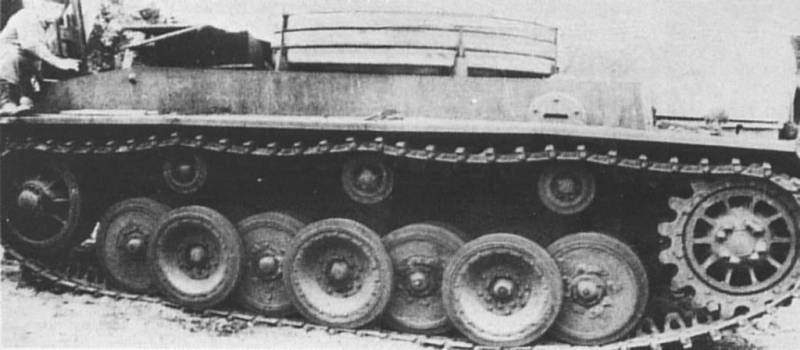
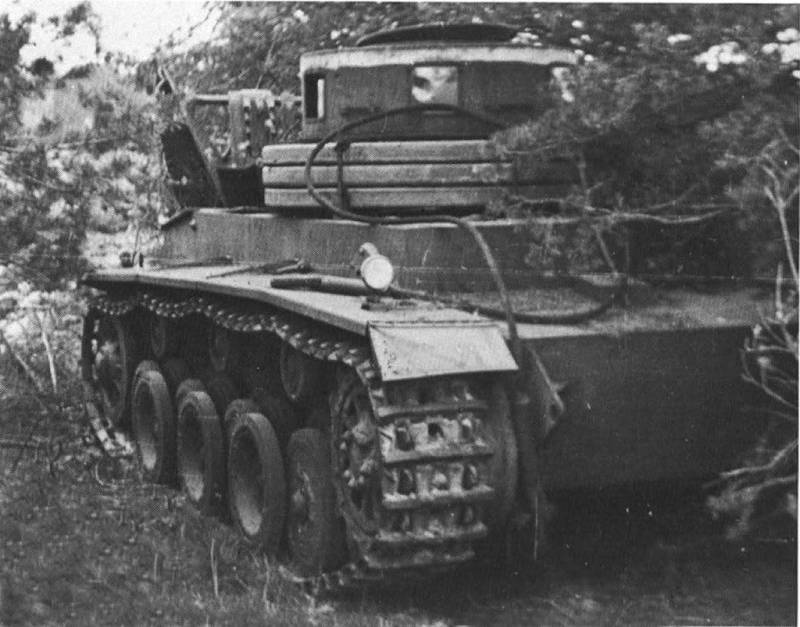
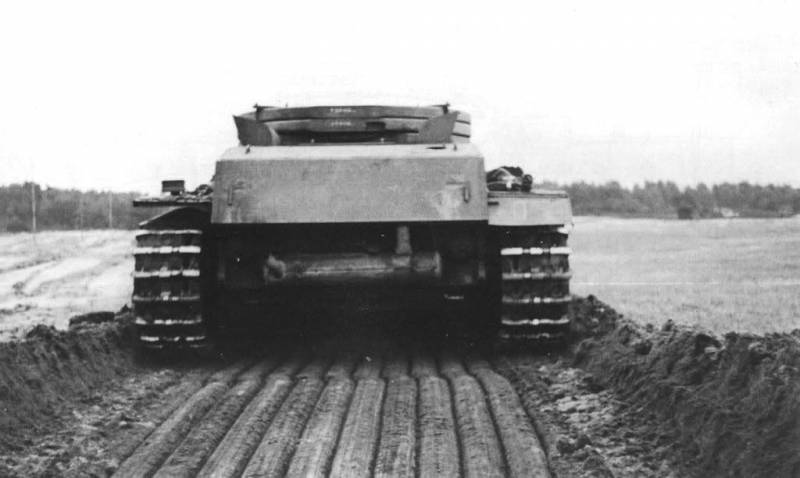
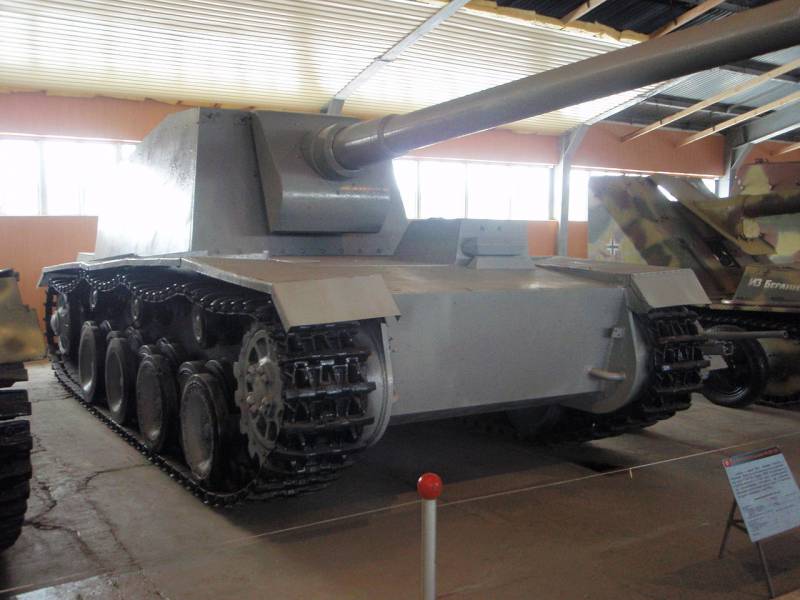
Information